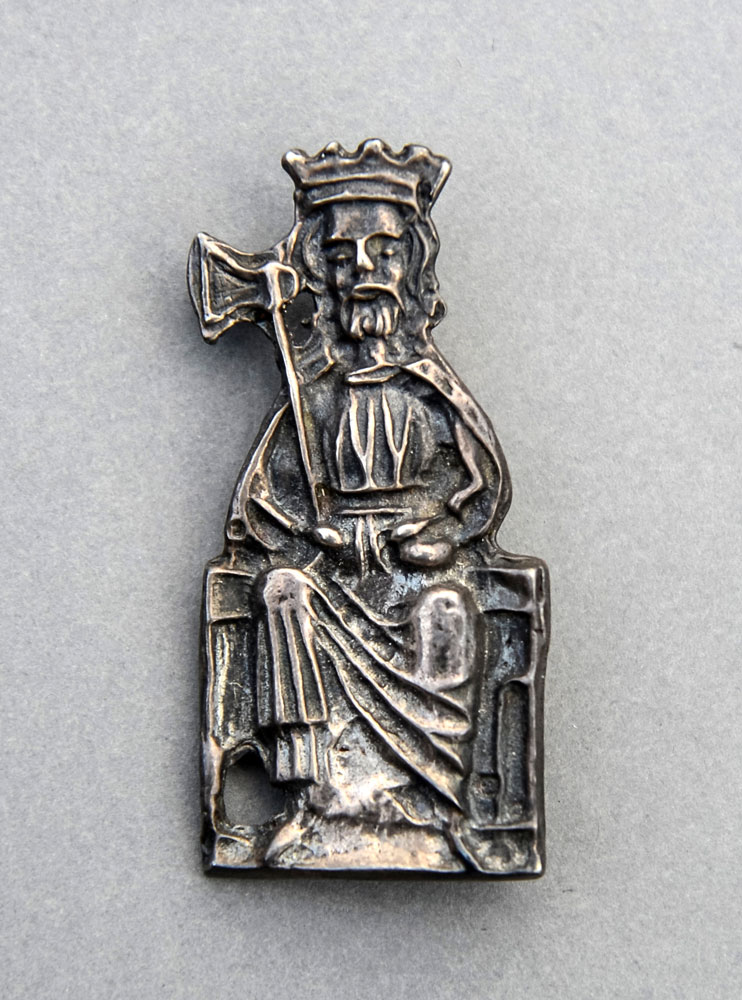Pilgrims’ path across Høgkleiva
– a heritage walk through a cultural and spiritual landscape
The ancient tradition of pilgrimage is practised in most religions. From time immemorial, mankind has sought answers to questions of origin, mortality, and divinity.
What is the pilgrims’ path?
When walking across Høgkleiva, you follow a pilgrims’ path through Gudbrandsdalen called Gudbrandsdalsleden – a 643 km way-marked route, meandering through a beautiful, diverse landscape from Oslo to Trondheim.
It forms part of the St. Olav Ways network of heritage walks leading to Trondheim and the Nidaros Cathedral, the burial site of St. Olav. This was the northernmost pilgrimage destination for Christians throughout the Middle Ages. Gudbrandsdalen was an important route for pilgrims travelling from the south.
In medieval times, people would go on pilgrimages to seek comfort, healing, and forgiveness. Walking these routes has once again become popular, and is often as much an exploration of culture and landscapes as it is an inner spiritual journey.


St. Olav and the oldest pilgrimage in Norway
The pilgrimage tradition in Norway started when king Olaf II Haraldsson fell in the Battle of Stiklestad in 1030. He was laid to rest in the Nidaros Cathedral in Trondheim, and reports of miracles at his tomb soon followed. A year later, he was canonised and became St. Olav – the patron saint of Norway. In the Middle Ages, religious beliefs and politics were closely linked. St. Olav became an important symbol for Norway, for the church, and for kings keen to legitimate their claim to the throne.
The cult of Olaf the Holy developed rapidly and spread across Europe, and Nidaros became an important pilgrimage destination.
The origins of pilgrimage
In Christianity, the practice of making pilgrimages dates back to the early church. The first Christians visited locations connected with Jesus, such as Jerusalem and Bethlehem, and in the early religious communities many martyrs were worshipped as saints.
As the cult of saints and martyrs increased in popularity, pilgrimages became common throughout the Christian part of the world. These journeys to holy sites were by many considered an important element of spiritual life, and were often imposed by the church as penance for sins.

A journey to Nidaros in AD 1070:
In 1070, the historian and chronicler Adam of Bremen writes about the archbishop’s journey to the northern churches, including Nidaros, and this is how he describes the pilgrimage to Trondheim:
“Trondheim is the most important city for the Norwegians. It is adorned with churches, and is visited by many. There lie the relics of Olaf, our blessed king and martyr. At his tomb, the Lord also today works the greatest healing miracles. And people, who believe that they can be saved through this holy man’s meritorious deeds, are arriving from far away. If you are sailing from Aalborg or Vendesyssel in Denmark, you will get to Viken in Norway in one day. From there you turn left and sail along the Norwegian coast, and on the fifth day you will reach the city of Trondheim. There is also an alternative route, leading from Skaane in Denmark and over land to Trondheim. But as this journey across the mountains is dangerous and takes longer, it is avoided by travellers.”
When the Lutheran Reformation reached Norway in 1537, pilgrimages were banned.
European Cultural Route
Pilgrimages to Trondheim and the Nidaros Cathedral have seen a revival in modern times. Work to restore and way-mark the pilgrims’ path between Oslo and Trondheim started in the 1990s, and this first stretch of the St. Olav Ways was officially opened by HRH Crown Prince Haakon Magnus on 29 July 1997.
Today, all the pilgrims’ routes to Trondheim, starting in Norway, Denmark, and Sweden, carry the St. Olav Ways logo. In 2011, the network was awarded status as European Cultural Route as part of the Cultural Routes of the Council of Europe programme.

For the modern-day pilgrim, the main motivation is often not a religious one. In medieval times, most pilgrimages were made to earn religious merit – although many must have seen the journey as an adventure and an escape. Today, people undertake these walks for a range of reasons. Most of those embarking on the pilgrims’ path are tempted by exciting landscapes, pristine nature, and quality routes. Exploring history and meeting other people are also important drivers.

Heritage paths and trails
The pilgrims’ path meanders through towns and villages, across mountains and waterfalls, and along ancient trails packed with history, culture, and local traditions. Walkers are treated to cultural heritage dating back a thousand years. People who live along the path share stories of old buildings, churches, and landscapes, and offer local food and exciting stopovers. It is where pilgrims, hosts, and local communities meet.
The pilgrims’ path is a heritage walk through a cultural and spiritual landscape.
